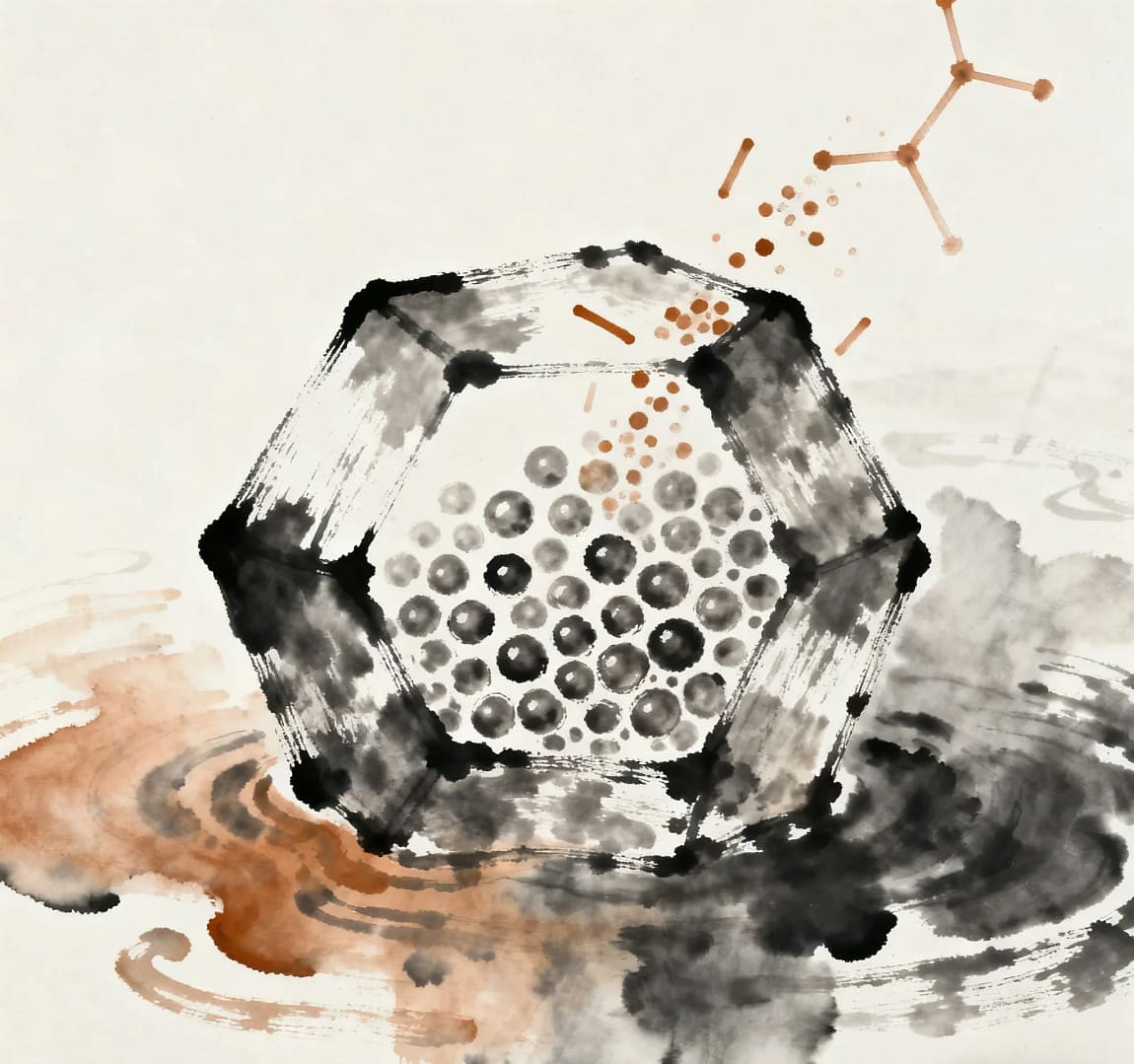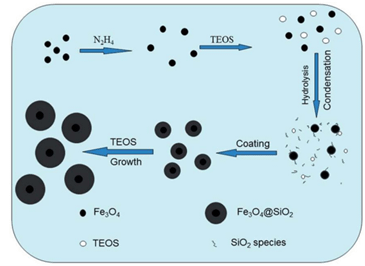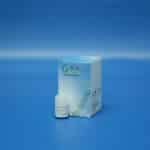Professional Manufacturer of Biomagnetic Beads

Nucleic Acid Aptamer: A New Hope For Precision Medicine
Nucleic acid aptamer is one of the outstanding new technologies which have been emerging in the field of biomedicine,with the rapid development of science and technology. It is like a precise “molecular key”, quietly opening a new door to precision medicine and bringing new dawn for human health.
I. Origin and definition of nucleic acid aptamer
In 1990, Ellington and Tuerk pioneered the development of nucleic acid aptamers through the exponential enrichment of ligands system (SELEX,Figure1). This breakthrough discovery, like a stone dropped into still water, created ripples that shook scientific understanding. While previous research had primarily focused on nucleic acids as mere genetic carriers, the aptamer revolution fundamentally redefined this conventional view.

Nucleic acid aptamers are single-stranded DNA or RNA molecules composed of 20 to 80 nucleotides. These seemingly simple molecules contain immense energy, functioning like molecular hunters that bind specific target molecules with high affinity and specificity(Figure 2). Functionally similar to antibodies we know, they are affectionately called “scientists’ antibodies”. However, their production methods differ dramatically: Antibodies rely on biological immune systems through complex processes dependent on animal models, whereas nucleic acid aptamers can be synthesized chemically at the laboratory level. This unique approach allows scientists to screen and design aptamers entirely in vitro, charting a distinct path for their development.

II. Unique properties of nucleic acid aptamers
1. Unshakable Stability: Within the complex physiological environment, nucleic acid aptamers maintain structural integrity. Whether facing temperature fluctuations, pH changes, or various interfering factors, they remain steadfast and undisturbed, ensuring their functions remain unaffected. This remarkable stability provides a solid foundation for their in vivo applications, enabling them to function effectively over extended periods in the intricate human body environment.
2. High Reproducibility: For scientific research and medical applications, the reproducibility of experimental results is crucial. Nucleic acid aptamers possess this essential characteristic. Regardless of laboratory conditions, following standardized protocols consistently yields reliable and repeatable outcomes. This significantly enhances the accuracy and credibility of related research and diagnostics, providing robust support for their widespread application.
3. Low or Non-Immunogenicity: When foreign substances enter the human body, the immune system typically identifies and attacks them through immune responses. Nucleic acid aptamers ingeniously circumvent this risk by possessing low or negligible immunogenicity. This characteristic prevents triggering strong immune reactions upon entry, enabling safer therapeutic application and significantly reducing adverse reaction risks during treatment.
4. Site-specific chemical modification sensitivity: This feature provides a flexible interface for modifying the performance of nucleic acid aptamers. Scientists can chemically modify specific sites according to practical needs, thereby altering their properties such as enhancing target binding capacity or extending in vivo half-life. This modifiability enables nucleic acid aptamers to better meet diverse application requirements, demonstrating remarkable adaptability.
III. Applicable scenarios of nucleic acid aptamers
1. Disease Diagnosis: Within the human body’s intricate ecosystem of trillions of cells, disease precursors often lie dormant in subtle molecular changes. Nucleic acid aptamers, with their pinpoint targeting capabilities, act like GPS systems to identify these anomalies. For instance, in early cancer detection, these aptamers can detect subtle biomarkers on cancer cell surfaces, providing critical time for treatment. Take triple-negative breast cancer (TNBC) as an example: its high cellular heterogeneity renders traditional diagnostic methods ineffective. The novel single-cell multidimensional molecular atlas technology using nucleic acid aptamers enables detailed mapping of membrane protein profiles at the cellular level, revealing significant differences between tumor subtypes and offering innovative strategies for TNBC precision diagnosis. Furthermore, in clinical imaging, combining aptamers with radionuclides has developed novel probes that not only enable molecular imaging but also guide targeted radiotherapy. During clinical trials for bladder cancer detection, these probes successfully distinguished inflammation from cancer with over 70% accuracy, effectively resolving the long-standing challenge of “inflammation-cancer ambiguity” in imaging, thereby significantly improving the precision and efficiency of disease classification and treatment.
2. Targeted Therapy: Nucleic acid aptamers can be directly designed as therapeutic agents or serve as delivery vehicles for targeted drugs. The internationally pioneered “DNA nanocarriage” concept utilizes nucleic acid aptamers as “locomotives” to precisely identify and target tumor cells, then release the loaded drugs to destroy cancer cells from within. This approach minimizes damage to healthy tissues while significantly enhancing treatment precision and safety. For instance, addressing the lack of effective targeted therapies for uveal melanoma, researchers developed a novel c-Met-targeted nucleic acid aptamer-drug conjugate (ApDC). This innovation effectively inhibits tumor growth and reduces metastasis risks, offering new hope for uveal melanoma patients.
3. Other Applications: Beyond medical diagnosis and treatment, nucleic acid aptamers play a vital role in biotechnology. In genetic engineering experiments, they enable precise identification and isolation of specific gene segments, facilitating research on gene functions and the development of novel genetic technologies. For environmental monitoring, these aptamers can rapidly detect pathogens, toxins, and other harmful substances in ecosystems, providing robust support for ecological conservation. In food safety inspections, specially designed nucleic acid aptamers targeting specific pathogenic microorganisms or hazardous chemicals enable rapid and accurate detection, ensuring public food safety.
IV. Prospects for the development of nucleic acid aptamers
With continuous technological advancements and in-depth research, nucleic acid aptamers are demonstrating promising development prospects. On one hand, innovations in technology will enhance the performance and application effectiveness of nucleic acid aptamers. For instance, the integration of artificial intelligence technologies—such as rapid sequence screening optimization, precise 3D structure prediction, and efficient processing of massive biological data—will significantly improve R&D efficiency and accuracy. On the other hand, as our understanding of disease mechanisms deepens, nucleic acid aptamers will play a more significant role in disease treatment and prevention. More innovative therapies and diagnostic technologies based on nucleic acid aptamers will emerge, delivering more efficient, precise, and personalized medical services to patients. Furthermore, the application scope of nucleic acid aptamers will continue to expand, extending from current fields like medicine and biotechnology to agriculture and industry, providing new solutions for addressing complex real-world challenges.
As a cutting-edge technology in biomedicine, nucleic acid aptamers have demonstrated tremendous potential across multiple fields through their unique molecular properties and functional advantages. Like a rising star, they are poised to shine even brighter in the future, making immeasurable contributions to human health and societal development. Let us eagerly await the dawn of a new era in precision medicine led by nucleic acid aptamers!
Supplier
Shanghai Lingjun Biotechnology Co., Ltd. was established in 2016 which is a professional manufacturer of biomagnetic materials and nucleic acid extraction reagents.
We have rich experience in nucleic acid extraction and purification, protein purification, cell separation, chemiluminescence, and other technical fields.
Our products are widely used in many fields, such as medical testing, genetic testing, university research, genetic breeding, and so on. We not only provide products but also can undertake OEM, ODM, and other needs. If you have a related need, please feel free to contact us .






